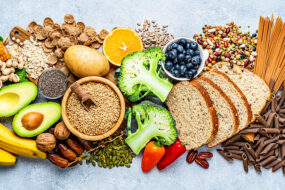Why you need to get a taste for truffles this winter
Truffles are more than just a pricy delicacy. They offer a slew of nutrients and associated health benefits along with their piquant flavour.
Each winter those with a penchant for the finer things in life indulge in one of gastronomy’s greatest delicacies: truffles.
The season is short – just three months a year – but those in the know are quick to get their hands on these pungent morsels.
The Folly Truffles truffle farmer Maple Egerton says while they are a subterranean fungus, the truffle itself is an edible fruiting body.
“They’re like a fruit but they grow and reproduce in a way that a mushroom would, using spores,” Maple explains.
Truffles grow on the roots of a tree – typically oak and hazelnut – receiving their nutrients in a symbiotic relationship that exists between the two living organisms.
Now farmed across every state except the Northern Territory, truffles have their roots firmly planted in Australia’s culinary scene.
But did you know they boast an impressive array of nutrients alongside their culinary accolades?
Dietitian Erika Hung, from The Lifestyle Dietitian, explains how truffles can provide a dietary boost.
Amazing health benefits of truffles
They are rich in minerals
Research suggests truffles contain a wide variety of minerals, an essential component for a healthy diet.
“Truffles are rich in minerals like calcium, magnesium and potassium, which play an important role in bone health,” Erika says.
Minerals also contribute to numerous functions within the body including metabolic reactions, nerve impulse transmission, and even salt regulation.
They contain bioactive compounds
Foods rich in bioactive compounds are a hot topic in nutrition and truffles are at the centre of it all.
“We’re seeing a lot of talk in the online space about their bioactive compounds, such as polyphenols and flavonoids,” Erika says.
“These are proposed to have antioxidant, anti-inflammatory, and antibacterial benefits.”
Erika also notes bioactive compounds are showing promising findings when it comes to the future of cancer treatments.
While more research is needed, Erika says recent studies around truffle’s bioactive compounds show great potential in reducing cancerous activity in cells.
Truffles contain amino acids
Truffles contain abundant amino acids including L-tyrosine, a precursor for neurotransmitters including epinephrine, norepinephrine and dopamine.
Tyrosine has been shown to increase dopamine availability leading researchers to investigate its ability to enhance cognitive performance when consumed as a food supplement.
How to incorporate truffles into your diet
Erika recommends getting creative when incorporating this highly flavourful fungus into your diet, suggesting a small amount goes a long way:
- Sprinkle a few truffle shavings over
- Garnish vegetables with grated truffle – grilled asparagus and cauliflower are just some of the veggies that are best friends with truffles.
- Whisk into scrambled eggs or mix into a frittata for a delicious hit of umami flavour.
- Spruce up salads, soups and tray bakes with a drizzle of truffle-infused oil.
More on healthy eating:
- Is the Harvard Plan the healthiest diet you’ve never heard of?
- Why unhealthy eating is the new smoking
- How to plan and stick to healthy eating on a budget
- Are green veggies the superheroes of healthy eating?
- Why healthy living is a better long-term goal than weight loss
Written by Sarah Vercoe.





